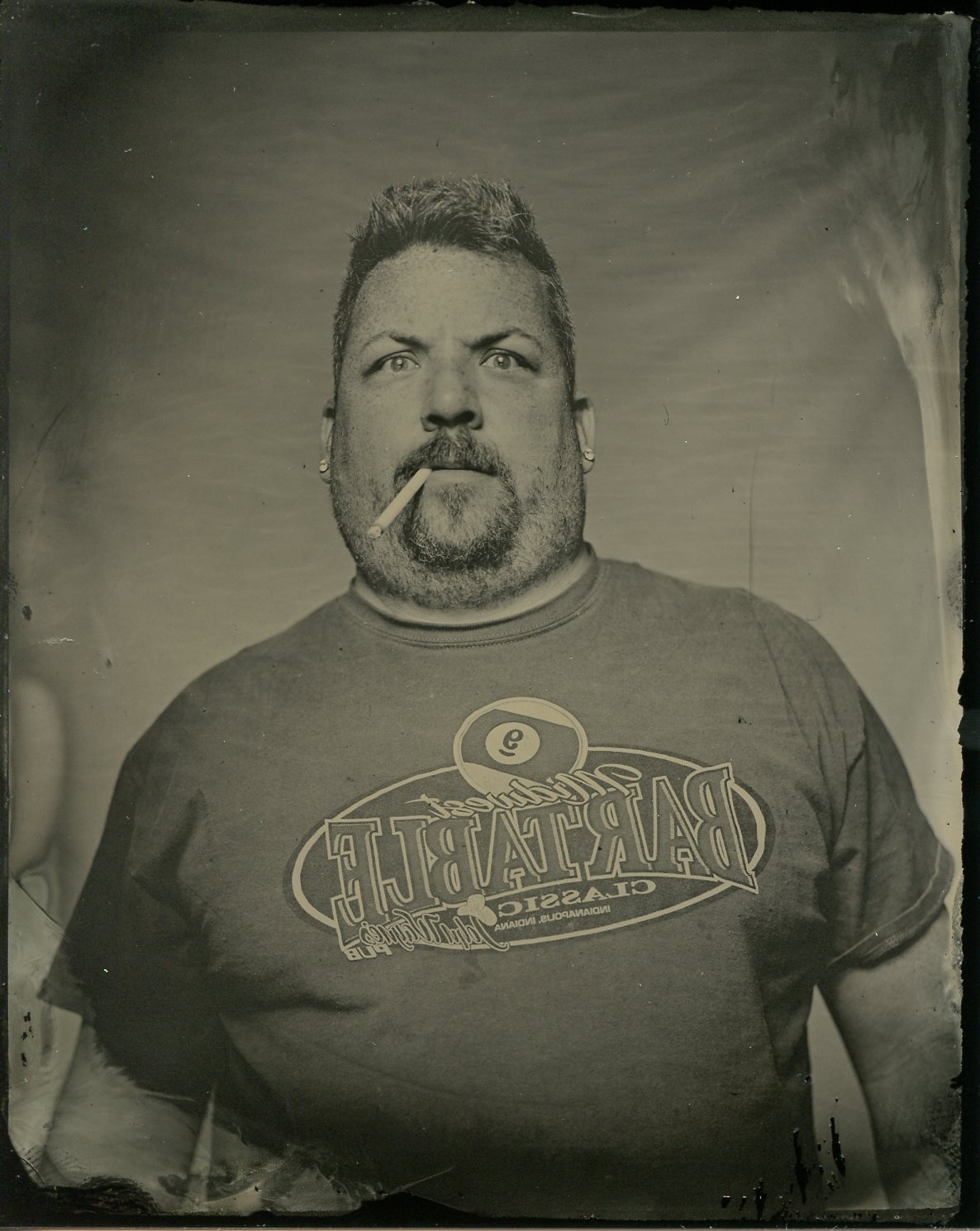Wet Plate Collodion
19th Century Photographic Process
The Wet plate Collodion process was created by Fredrick Scott Archer in 1848. It was the second major photographic process to be used by commercial photographers. Commonly referred to as “Tintypes” the images were created on tin (now aluminum) and glass plates. The tintype is a reverse image (like seen in a mirror) while the glass plate can be developed into a glass negative from which you can make prints using alternative printing processes such as Cyanotypes, Van Dyke Brown, Albumen Prints just to name a few.
Collodion sees the light differently from your modern camera or film as it is only sensitive to the blue and UV end of the light spectrum. It has a sepia-like tone as reds will look grey or black and the blues will look light grey or even white with an overall orangy silvery tone depending on the fixing agent used. The whole process from start to finish to create an image usually takes about 10 minutes with an average sitting time of 1-5 seconds.











































